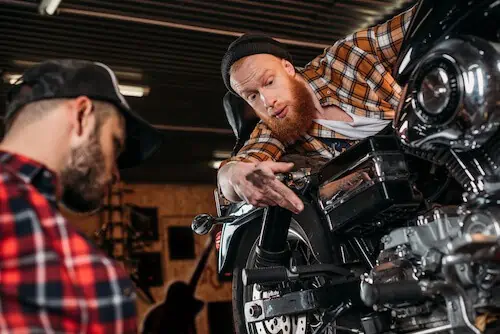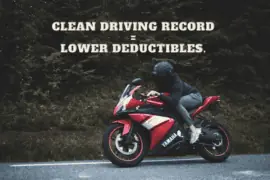Your motorcycle insurance might mention that you’ve got some limited coverage for custom parts and equipment. Sometimes referred to as CPE insurance, this policy protects the aftermarket modifications and accessories added to your bike.
Although some insurance companies provide $3,000 or more in CPE, it’s typically treated as an endorsement. That means you must ask for it to supplement the existing protections you have for your motorcycle.
Didn't You Try Our Quote Comparison Tool Yet? Save BIG by Doing it!
Most CPE policies cover permanently installed items, including various enhancements to how the bike operates.
If you’re considering adding CPE coverage to your motorcycle insurance policy, here are a few things you should know about this investment.
Table of Content
What Is Protected by Custom Parts and Equipment Coverage?
The actual protections provided by CPE coverage depend on what the insurer offers. Some companies will cover almost anything you’ve had permanently installed on the motorcycle, while others have specific exclusions to review.
Most motorcycle custom parts and equipment coverage options cover the following add-ons.
- Chrome materials added to the motorcycle.
- Custom wheels, including magnesium or alloy, along with associated tires and similar components.
- Dealer-installed items that aren’t considered stock from the factory.
- Custom paint, including graphics, murals, decals, and other aftermarket changes.
- Anti-theft devices, unique equipment, or a custom suspension.
- Required safety equipment for the rider.
When reviewing the need for motorcycle CPE coverage, the general rule is that anything added by the dealership, you, or a third-party provider that isn’t OEM should be reviewed for this insurance coverage.
Are There Modifications That CPE Coverage Won’t Protect?
Although custom parts and equipment policies cover most added components to a motorcycle, it does not provide blanket coverage.
Some insurers have exclusions that prevent policies from covering specific modifications, especially with an aftermarket approach.
Here are some of the standard limits or exclusions you’ll find when shopping for CPE insurance options for your motorcycle.
- Homemade modifications that don’t meet the required specs published by the motorcycle dealership or manufacturer.
- Suspension kits that alter how the bike handles on the road.
- Custom parts that exceed the limit of the policy.
- Illegal modifications to the motorcycle.
If a modification is legal where you live but illegal in another state, you might still have problems getting those custom parts covered. The eventual decision is up to the insurance company when you’ve submitted the information about your motorcycle to receive a quote.
What Motorcycle Modifications Could Be Considered Illegal?
The biggest issue that motorcyclists face when modding a bike involves the handlebars. Customizing this part delivers a unique feature and visual aesthetic, by ape hangers can go too far.
In California, your hands cannot be more than four inches over your shoulders when they rest on your motorcycle’s handlebar grips.
California also requires all motorcycles manufactured after 1973 to have their turn signals to be 16 inches apart. Stock models made before that year must be nine inches. If your modifications don’t meet these standards or those in your state, the insurance company might reject your request for CPE coverage.
Another popular mod today involves LEDs on the chassis. Each state has different rules, but anything that projects to the front must be white or yellow. Neon colors cannot replace your turn signals, brake lights, or other required indicators.
Underglow is allowed in California but cannot exceed 720 square inches.
What Happens If I Put in a Bigger Engine?
Each motorcycle chassis is built to serve a specific engine. There is a perfect balance between power, performance, and weight. The wheels and brakes are often tuned to the speed and displacement specs.
If you change your motorcycle’s engine during the modification process, the bike’s driving dynamics can be significantly altered.
Engine changes must pass an inspection in several states before the motorcycle is considered road-legal or insurable.
Even if it passes inspection, an insurance company can decide that the modification is too risky to provide CPE coverage.
How Do I Request CPE Coverage?
When you ask for a motorcycle insurance quote, it helps to check the box that you have custom parts and equipment on your bike.
That action triggers a request for more information. You’ll be asked about the changes you, the dealership, or a third-party provider have made to the design.
The most accurate quotes come from a complete and honest picture of the custom modifications. If you don’t list the aftermarket changes, they won’t be covered by your insurance.
If you enjoy a custom ride, the best way to start is to receive sound advice from the beginning. Work with your dealer, document your changes, and be aware of local rules. When your motorcycle is street legal, you shouldn’t have problems acquiring the CPE coverage required to protect this investment.
Use This Tool for Free and Save on Quotes!






